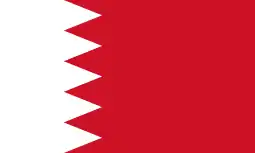List of national flags by design
A national flag is a flag that represents and symbolizes a country. Flags come in many shapes and designs, which often represent something about the country or people that the flag represents. Common design elements of flags include shapes such as stars, stripes, and crosses, layout elements such as including a canton (a rectangle with a distinct design, such as another national flag), and the overall shape of a flag, such as the aspect ratio of a rectangular flag (whether the flag is square or rectangle, and how wide it is) or the choice of a non-rectangular flag.
Many countries with shared history, culture, ethnicity, or religion have similarities in their flags that represent this connection. Sets of flags in this list within the same category may represent countries' shared connections, or the design similarity may be a coincidence.
Uncommon flag shapes
.svg.png.webp) Belgium: Aspect ratio of 13:15
Belgium: Aspect ratio of 13:15 El Salvador: Aspect ratio of 189:335
El Salvador: Aspect ratio of 189:335 Monaco: Aspect ratio of 4:5
Monaco: Aspect ratio of 4:5 Nepal: The only national flag that is not rectangular, being made with 5 sides.
Nepal: The only national flag that is not rectangular, being made with 5 sides.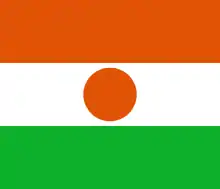 Niger: Aspect ratio of 6:7
Niger: Aspect ratio of 6:7 Qatar: The largest aspect ratio of any national flag, 11:28, making the flag's width 2.545 times larger than the height.
Qatar: The largest aspect ratio of any national flag, 11:28, making the flag's width 2.545 times larger than the height. Switzerland: 1:1 (Square-shaped)
Switzerland: 1:1 (Square-shaped) Togo: Aspect ratio of 2:3.23607, the golden ratio which is roughly 1.618035
Togo: Aspect ratio of 2:3.23607, the golden ratio which is roughly 1.618035 Vatican City: 1:1 (Square-shaped)
Vatican City: 1:1 (Square-shaped)
Star(s)*
One five-pointed star in center
 Burkina Faso
Burkina Faso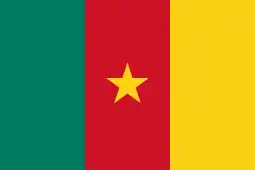 Cameroon
Cameroon Ghana
Ghana Myanmar
Myanmar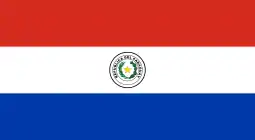 Paraguay
Paraguay Senegal
Senegal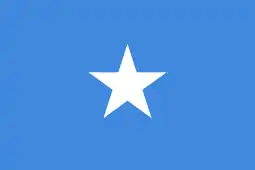 Somalia
Somalia Somaliland (unrecognized)
Somaliland (unrecognized) Suriname
Suriname Vietnam
Vietnam.svg.png.webp) Socialist Federal Republic of Yugoslavia (1943–1992)
Socialist Federal Republic of Yugoslavia (1943–1992)
See also the list of flags featuring crescents, below, many of which include a five-pointed star in the crescent.
One five-pointed star on hoist
 Central African Republic
Central African Republic Cuba
Cuba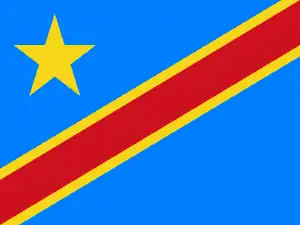 Democratic Republic of the Congo
Democratic Republic of the Congo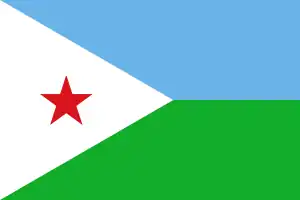 Djibouti
Djibouti East Timor
East Timor Guinea-Bissau
Guinea-Bissau North Korea
North Korea South Sudan
South Sudan Republic of West Papua (unrecognized) (Morning Star Flag)
Republic of West Papua (unrecognized) (Morning Star Flag)
Multiple five-pointed stars of equal size
 Abkhazia (unrecognized) (7)
Abkhazia (unrecognized) (7) Bosnia and Herzegovina (9, 2 of which are half stars)
Bosnia and Herzegovina (9, 2 of which are half stars) Comoros (4)
Comoros (4)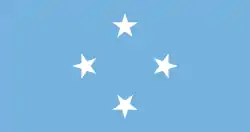 Federated States of Micronesia (4)
Federated States of Micronesia (4) Honduras (5)
Honduras (5) Hong Kong (China) (5)
Hong Kong (China) (5)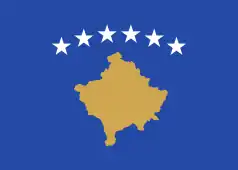 Kosovo (partly recognized) (6)
Kosovo (partly recognized) (6) Panama (2)
Panama (2) Philippines (3)
Philippines (3)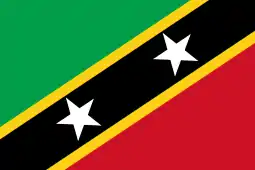 Saint Kitts and Nevis (2)
Saint Kitts and Nevis (2)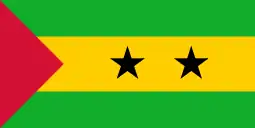 São Tomé and Príncipe (2)
São Tomé and Príncipe (2) Singapore (5)
Singapore (5) Solomon Islands (5)
Solomon Islands (5) Syria (2)
Syria (2) Turkmenistan (5)
Turkmenistan (5) Tuvalu (9)
Tuvalu (9) United States (varies, based on number of states, currently 50)
United States (varies, based on number of states, currently 50)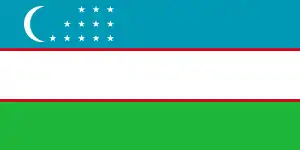 Uzbekistan (12)
Uzbekistan (12) Venezuela (8)
Venezuela (8)
Circle of five-pointed stars
 Cape Verde (10 stars)
Cape Verde (10 stars) Dominica (10 stars)
Dominica (10 stars) Tajikistan (7 stars)
Tajikistan (7 stars).svg.png.webp) United States (1777-1795) (13 stars)
United States (1777-1795) (13 stars) European Union (12 stars)
European Union (12 stars)
Multiple five-pointed stars in different sizes
 Brazil (27)
Brazil (27) Grenada (7)
Grenada (7) New Zealand (4)
New Zealand (4) Niue (associated state of New Zealand) (5)
Niue (associated state of New Zealand) (5) Papua New Guinea (5)
Papua New Guinea (5) People's Republic of China (5)
People's Republic of China (5)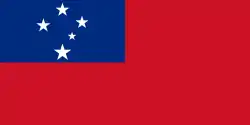 Samoa (5)
Samoa (5)
Six-pointed

One many-pointed star
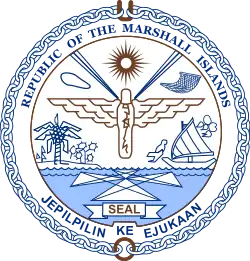
 Azerbaijan (8 points)
Azerbaijan (8 points) Jordan (7 points)
Jordan (7 points) Malaysia (14 points)
Malaysia (14 points) Marshall Islands (24 points)
Marshall Islands (24 points)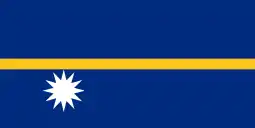 Nauru (12 points)
Nauru (12 points)
Multiple many-pointed stars

Southern Cross

.svg.png.webp)
The Southern Cross or Crux, a constellation visible in the Southern Hemisphere, is depicted on flags and coats of arms of various countries and sub-national entities. This star constellation is visible mostly in the southern hemisphere and it therefore symbolises the southern location of its users.
(The term Southern Cross can also refer to the blue saltire as used in various flags of the Confederate States of America in the American Civil War.)
.svg.png.webp) Australia
Australia Brazil: the southern cross is reversed
Brazil: the southern cross is reversed New Zealand
New Zealand Papua New Guinea
Papua New Guinea Samoa'
Samoa'
Stars and stripes


 Aruba (4 Points and 2 Stripes)
Aruba (4 Points and 2 Stripes) Azerbaijan
Azerbaijan Cape Verde (10, 5 pointed stars)
Cape Verde (10, 5 pointed stars) Chile
Chile Comoros
Comoros Croatia
Croatia Cuba
Cuba Djibouti
Djibouti Guinea-Bissau
Guinea-Bissau Honduras
Honduras Jordan
Jordan North Korea
North Korea Liberia
Liberia Libya
Libya Malaysia
Malaysia Myanmar
Myanmar Nauru
Nauru Philippines
Philippines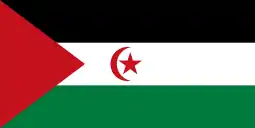 Sahrawi Arab Democratic Republic (unrecognized)
Sahrawi Arab Democratic Republic (unrecognized) São Tomé and Príncipe
São Tomé and Príncipe Singapore
Singapore Slovenia
Slovenia Somaliland (unrecognized)
Somaliland (unrecognized) South Sudan
South Sudan Suriname
Suriname Syria
Syria Tajikistan
Tajikistan Togo
Togo United States
United States Uzbekistan
Uzbekistan Venezuela
Venezuela Republic of West Papua (unrecognized)
Republic of West Papua (unrecognized)
Crescent
Facing fly

 Algeria
Algeria Azerbaijan
Azerbaijan Comoros
Comoros- Karakalpakstan (autonomous republic of Uzbekistan)
 Libya
Libya Malaysia
Malaysia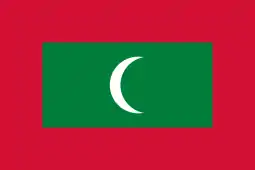 Maldives
Maldives Northern Cyprus (unrecognized)
Northern Cyprus (unrecognized) Sahrawi Arab Democratic Republic (unrecognized)
Sahrawi Arab Democratic Republic (unrecognized) Singapore
Singapore Tunisia
Tunisia Turkey
Turkey Uzbekistan
Uzbekistan
Facing diagonally

.svg.png.webp) Comoros (1978–1992)
Comoros (1978–1992) Croatia
Croatia Moldova
Moldova Pakistan
Pakistan Turkmenistan
Turkmenistan
Circle
One circle in center

One circle on hoist
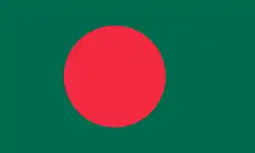
 Bangladesh
Bangladesh Greenland (autonomous territory of Denmark)
Greenland (autonomous territory of Denmark) North Korea
North Korea Namibia
Namibia New Caledonia (French overseas collectivity)
New Caledonia (French overseas collectivity)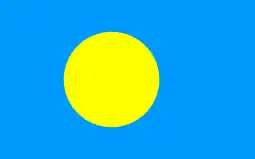 Palau
Palau Portugal
Portugal
One broken or implied circle

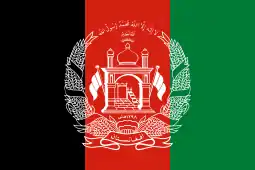 Afghanistan
Afghanistan Cabo Verde
Cabo Verde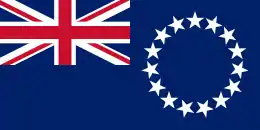 Cook Islands (associated state of New Zealand)
Cook Islands (associated state of New Zealand).svg.png.webp) Cook Islands (1973–1979)
Cook Islands (1973–1979) Dominica
Dominica Eritrea
Eritrea European Union (an organisation)
European Union (an organisation) French Polynesia (French overseas territory)
French Polynesia (French overseas territory) Northern Mariana Islands (US overseas territory)
Northern Mariana Islands (US overseas territory)
Triangle
Triangle(s) in centre

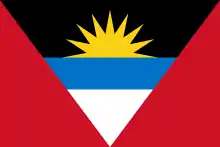 Antigua and Barbuda
Antigua and Barbuda Bosnia and Herzegovina
Bosnia and Herzegovina Israel (6 that make up the shape, 2 to draw it)
Israel (6 that make up the shape, 2 to draw it) Saint Lucia
Saint Lucia
Triangle(s) on hoist

 Bahamas
Bahamas Comoros
Comoros Cuba
Cuba Czech Republic
Czech Republic Djibouti
Djibouti East Timor
East Timor Eritrea
Eritrea Equatorial Guinea
Equatorial Guinea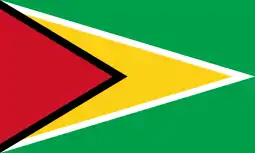 Guyana
Guyana Jamaica
Jamaica Jordan
Jordan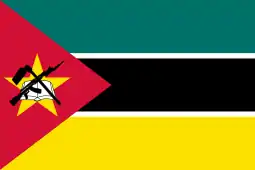 Mozambique
Mozambique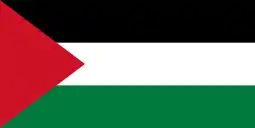 Palestine (disputed)
Palestine (disputed) Philippines
Philippines Sahrawi Arab Democratic Republic (unrecognized)
Sahrawi Arab Democratic Republic (unrecognized) São Tomé and Príncipe
São Tomé and Príncipe.svg.png.webp) Seychelles (1976–1977)
Seychelles (1976–1977) Sint Maarten
Sint Maarten South Africa
South Africa South Sudan
South Sudan Sudan
Sudan.svg.png.webp) Tuvalu (1995–1997)
Tuvalu (1995–1997) Vanuatu
Vanuatu Zimbabwe
Zimbabwe
Stripes
Two equal horizontal stripes in two colors


 Angola
Angola Benin
Benin Burkina Faso
Burkina Faso Czech Republic
Czech Republic Djibouti
Djibouti Guinea-Bissau
Guinea-Bissau Haiti
Haiti Indonesia
Indonesia Liechtenstein
Liechtenstein Madagascar
Madagascar Monaco
Monaco Philippines
Philippines Poland
Poland Singapore
Singapore Sint Maarten
Sint Maarten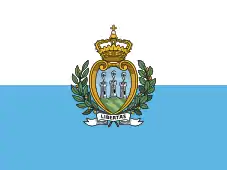 San Marino
San Marino Ukraine
Ukraine.svg.png.webp) Wales (UK constituent country)
Wales (UK constituent country)
Three equal horizontal stripes in two colors


 Argentina
Argentina Austria
Austria Bahamas
Bahamas.svg.png.webp) Belarus (1991–1995)
Belarus (1991–1995) Honduras
Honduras Nicaragua
Nicaragua El Salvador
El Salvador.svg.png.webp) Confederate States of America (1861-1863)
Confederate States of America (1861-1863)
Three thin-and-thick horizontal stripes in two colors

.svg.png.webp) Armenia (Constituent republic of the Soviet Union)
Armenia (Constituent republic of the Soviet Union) Belize
Belize Cambodia
Cambodia French Polynesia (overseas collectivity of France)
French Polynesia (overseas collectivity of France)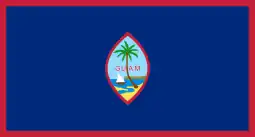 Guam (US overseas territory)
Guam (US overseas territory)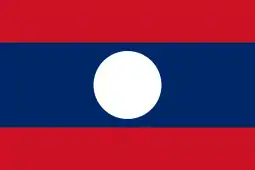 Laos
Laos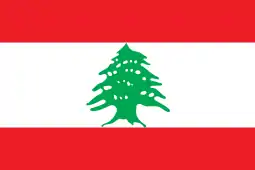 Lebanon
Lebanon Mauritania
Mauritania.svg.png.webp) Moldavia (Constituent republic of the Soviet Union)
Moldavia (Constituent republic of the Soviet Union) São Tomé and Príncipe
São Tomé and Príncipe Spain
Spain Transnistria (unrecognized)
Transnistria (unrecognized)
Three fimbriated thin-and-thick horizontal stripes in two colors

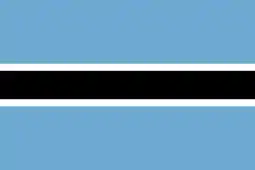 Botswana
Botswana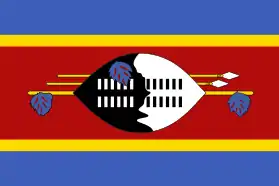 Eswatini
Eswatini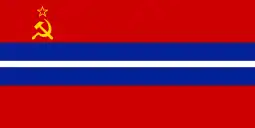 Kirghizia (Constituent republic of the Soviet Union)
Kirghizia (Constituent republic of the Soviet Union) Kyrgyzstan (1991–1992)
Kyrgyzstan (1991–1992) North Korea
North Korea Suriname
Suriname.svg.png.webp) Turkmenistan (Constituent republic of the Soviet Union)
Turkmenistan (Constituent republic of the Soviet Union).svg.png.webp) Turkmenistan (1991–1992)
Turkmenistan (1991–1992)
Many equal horizontal stripes in two colors

 Abkhazia (unrecognized) (7)
Abkhazia (unrecognized) (7) Cuba (5)
Cuba (5) Greece (9)
Greece (9) Liberia (11)
Liberia (11) Malaysia (14)
Malaysia (14) Seborga (18 stripes)
Seborga (18 stripes) Togo (5)
Togo (5) Uruguay (9)
Uruguay (9) United States (13, representing the 13 colonies)
United States (13, representing the 13 colonies) Republic of West Papua (unrecognized) (13) (Morning Star Flag)
Republic of West Papua (unrecognized) (13) (Morning Star Flag)
Three colors
Three equal horizontal stripes in three colors

.svg.png.webp) Afghanistan (1928)
Afghanistan (1928).svg.png.webp) Afghanistan (1980–1987)
Afghanistan (1980–1987).svg.png.webp) Afghanistan (1987–1992)
Afghanistan (1987–1992).svg.png.webp) Afghanistan (1992)
Afghanistan (1992).svg.png.webp) Afghanistan (1992–2001)
Afghanistan (1992–2001).svg.png.webp) Afghanistan (2001–2002)
Afghanistan (2001–2002) Armenia
Armenia Republic of Artsakh (unrecognized)
Republic of Artsakh (unrecognized) Azerbaijan
Azerbaijan Biafra (1967-1970)
Biafra (1967-1970)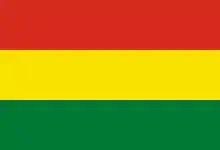 Bolivia
Bolivia Bulgaria
Bulgaria Croatia
Croatia Egypt
Egypt Estonia
Estonia Ethiopia
Ethiopia Gabon
Gabon Germany
Germany.svg.png.webp) Germany (1867–1919, 1933–1935)
Germany (1867–1919, 1933–1935) Ghana
Ghana.svg.png.webp) Ghana (1962–1966)
Ghana (1962–1966) Equatorial Guinea
Equatorial Guinea Hungary
Hungary India
India Iran
Iran Iraq
Iraq Iraqi Kurdistan (autonomous region in Iraq)
Iraqi Kurdistan (autonomous region in Iraq) Jordan
Jordan Kenya
Kenya Kuwait
Kuwait Lithuania
Lithuania Luxembourg
Luxembourg Malawi
Malawi Mozambique
Mozambique Myanmar
Myanmar New Caledonia (overseas collectivity of France)
New Caledonia (overseas collectivity of France) Niger
Niger Netherlands
Netherlands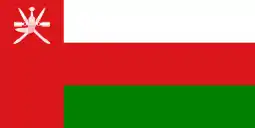 Oman
Oman Paraguay
Paraguay Palestine (partly recognized)
Palestine (partly recognized) Russian Federation
Russian Federation Sahrawi Arab Democratic Republic (unrecognized)
Sahrawi Arab Democratic Republic (unrecognized) South Ossetia (unrecognized)
South Ossetia (unrecognized) Sudan
Sudan.svg.png.webp) Sudan (1956–1971)
Sudan (1956–1971) Sierra Leone
Sierra Leone Serbia
Serbia Slovakia
Slovakia Slovenia
Slovenia Somaliland (unrecognized)
Somaliland (unrecognized).svg.png.webp) South Africa (1928–1994)
South Africa (1928–1994) South Sudan
South Sudan.svg.png.webp) Spain (1931–1939)
Spain (1931–1939) Syria
Syria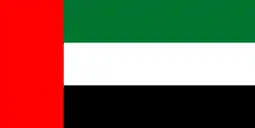 United Arab Emirates
United Arab Emirates Upper Volta (1958-1984)
Upper Volta (1958-1984) Uzbekistan
Uzbekistan Venezuela
Venezuela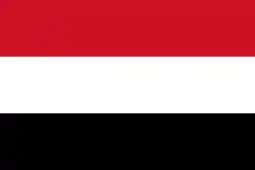 Yemen
Yemen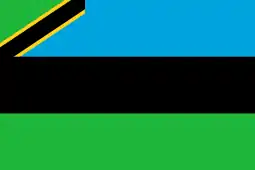 Zanzibar (semi-autonomous region in Tanzania)
Zanzibar (semi-autonomous region in Tanzania)
Three unequal horizontal stripes in three colors
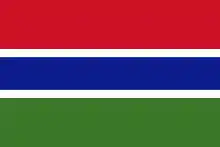
.svg.png.webp) Afghanistan (1974–1978)
Afghanistan (1974–1978) Antigua and Barbuda
Antigua and Barbuda Colombia
Colombia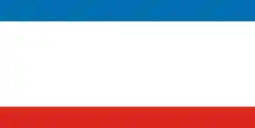 Crimea (disputed)
Crimea (disputed) Ecuador
Ecuador Gambia
Gambia Lesotho
Lesotho Libya'
Libya' Rwanda
Rwanda Tajikistan
Tajikistan
Five unequal horizontal stripes in three colors


Four colors
Four equal horizontal stripes in four colors
Two unequal vertical stripes in two colors
.svg.png.webp) Russian Soviet Federative Socialist Republic (Constituent republic of the Soviet Union)
Russian Soviet Federative Socialist Republic (Constituent republic of the Soviet Union) Pakistan
Pakistan Portugal
Portugal
Three equal vertical stripes in two colors

Three equal vertical stripes in three colors

Three unequal vertical stripes

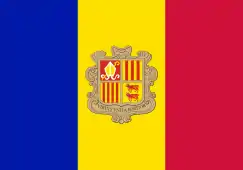 Andorra
Andorra.svg.png.webp) Canada
Canada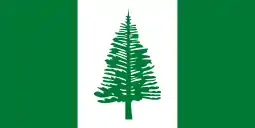 Norfolk Island (Australian external territory)
Norfolk Island (Australian external territory)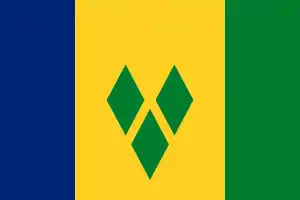 Saint Vincent and the Grenadines
Saint Vincent and the Grenadines
Saint George's Cross
 England
England United Kingdom
United Kingdom Georgia
Georgia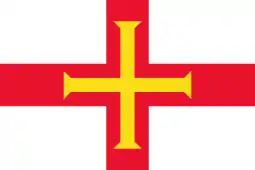 Guernsey (UK crown dependency)
Guernsey (UK crown dependency)
Others
 Dominican Republic
Dominican Republic Georgia - Jerusalem cross
Georgia - Jerusalem cross United Kingdom - Saltire
United Kingdom - Saltire Dominica
Dominica Malta
Malta Switzerland
Switzerland
Two diagonal stripes

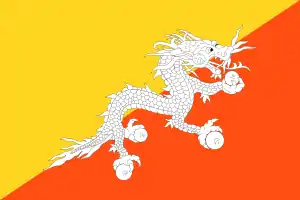 Bhutan
Bhutan Christmas Island (external territory of Australia)
Christmas Island (external territory of Australia) French Guiana (overseas department and region of France)
French Guiana (overseas department and region of France) Papua New Guinea
Papua New Guinea
Three fimbriated diagonal stripes
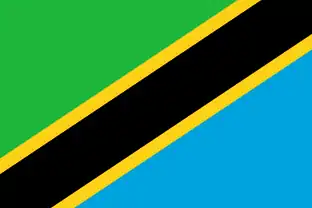
 Democratic Republic of the Congo
Democratic Republic of the Congo Namibia
Namibia Saint Kitts and Nevis
Saint Kitts and Nevis Tanzania
Tanzania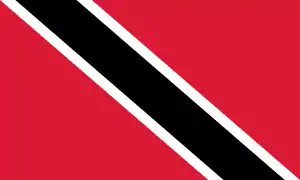 Trinidad and Tobago
Trinidad and Tobago Zanzibar (semi-autonomous region of Tanzania)
Zanzibar (semi-autonomous region of Tanzania)
Many radiating diagonal stripes

 Guyana (6)
Guyana (6) Eritrea (3)
Eritrea (3) Marshall Islands (4)
Marshall Islands (4) Seychelles (5)
Seychelles (5)
Cross
Upright centred cross
.svg.png.webp)
 Switzerland
Switzerland Dominica
Dominica Dominican Republic
Dominican Republic Martinique (overseas region of France)
Martinique (overseas region of France) Quebec (Canadian province)
Quebec (Canadian province)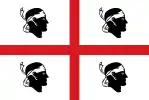 Sardinia (autonomous region in Italy)
Sardinia (autonomous region in Italy)
Saint George's Cross

 England (UK constituent country)
England (UK constituent country) Guernsey (UK crown dependency)
Guernsey (UK crown dependency).svg.png.webp) Kingdom of Great Britain
Kingdom of Great Britain United Kingdom
United Kingdom
Nordic Cross
Nordic Cross in two colours

Nordic Cross in three colours

 Åland Islands (autonomous region of Finland)
Åland Islands (autonomous region of Finland)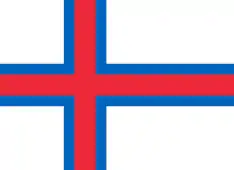 Faroe Islands (self-governing country of Denmark)
Faroe Islands (self-governing country of Denmark) Iceland
Iceland Norway
Norway
One cross in emblem

 Greece
Greece Marshall Islands
Marshall Islands Moldova
Moldova Montenegro
Montenegro Montserrat (UK overseas territory)
Montserrat (UK overseas territory) Portugal
Portugal San Marino
San Marino Serbia
Serbia Slovakia
Slovakia Spain
Spain Vatican City
Vatican City
St. Andrew's Cross
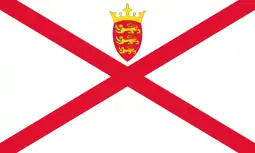 Jersey (UK crown dependency)
Jersey (UK crown dependency)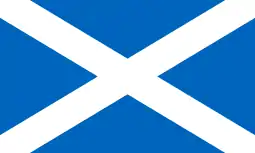 Scotland (UK constituent country)
Scotland (UK constituent country) United Kingdom
United Kingdom
Upright and diagonal centred crosses

 North Macedonia
North Macedonia United Kingdom
United Kingdom.svg.png.webp) Kingdom of Great Britain (1707–1801)
Kingdom of Great Britain (1707–1801)
Union Jack

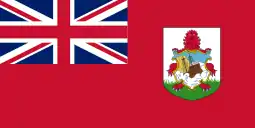

.svg.png.webp)
.svg.png.webp)
.svg.png.webp) Australia
Australia.svg.png.webp) Australia (1901–1903)
Australia (1901–1903).svg.png.webp) Australia (1903–1908)
Australia (1903–1908).svg.png.webp) Bermuda (1910–1999)
Bermuda (1910–1999).svg.png.webp) Canada (1868–1921)
Canada (1868–1921).svg.png.webp) Canada (1921–1957)
Canada (1921–1957).svg.png.webp) Canada (1957–1965)
Canada (1957–1965).svg.png.webp) Kingdom of Great Britain (1707–1801)
Kingdom of Great Britain (1707–1801) Fiji
Fiji New Zealand
New Zealand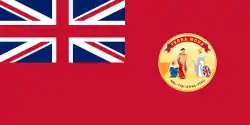 Newfoundland (1907–1949)
Newfoundland (1907–1949).svg.png.webp) South Africa (1928–1994)
South Africa (1928–1994).svg.png.webp) South Africa (1910–1928)
South Africa (1910–1928) Tuvalu
Tuvalu.svg.png.webp) Tuvalu (1976–1978)
Tuvalu (1976–1978).svg.png.webp) Tuvalu (1978–1996)
Tuvalu (1978–1996) United Kingdom
United Kingdom.svg.png.webp) United States (1775–1777)
United States (1775–1777)
Additionally, the Union Jack features in many territorial and sub-national flags. These are often Red Ensigns (e.g., ![]() Bermuda) or Blue Ensigns (e.g.,
Bermuda) or Blue Ensigns (e.g., ![]() New South Wales and
New South Wales and ![]() Anguilla). A small number have backgrounds of other colours (e.g.
Anguilla). A small number have backgrounds of other colours (e.g. ![]() British Antarctic Territory and
British Antarctic Territory and ![]() Niue) or a unique pattern in the field (e.g.
Niue) or a unique pattern in the field (e.g. ![]() British Indian Ocean Territory and
British Indian Ocean Territory and ![]() Hawaii). A small number put the Union Jack somewhere other than the canton (e.g.
Hawaii). A small number put the Union Jack somewhere other than the canton (e.g. ![]() British Columbia). Unofficial flags, such as
British Columbia). Unofficial flags, such as ![]() Ross Dependency also use it.
Ross Dependency also use it.
Divisions
Upper left divided from rest of flag

A canton in a flag is a rectangular area at the top hoist corner of a flag, occupying up to a quarter of the flag's area. The canton of a flag may be a flag in its own right. For instance, British ensigns have the Union Jack as their canton, as do their derivatives such as the national flags of Australia and New Zealand. Following the practice of British ensigns, a canton sometimes contains a symbol of national unity such as the blue field and white stars of the U.S. flag. In these cases, the canton may be called simply the union.
The U.S. flag's canton derives from the British use of the Union Jack in the canton of its possessions (including, historically, the early United States). Subsequently, many New World nations (and other later countries and regions, such as Liberia or Malaysia) that were inspired by the U.S. incorporated elements likewise inspired by the U.S. flag. As a result, many extant uses of a prominent canton derive either from British territorial history, or U.S. influence and inspiration.
One vertical stripe on hoist

 Belarus
Belarus Benin
Benin Guinea-Bissau
Guinea-Bissau Madagascar
Madagascar Oman
Oman Morning Star flag (Republic of West Papua, 1961–62)
Morning Star flag (Republic of West Papua, 1961–62) United Arab Emirates
United Arab Emirates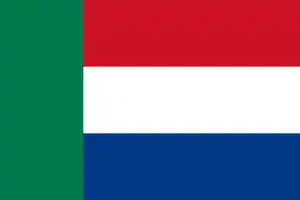 South African Republic (1852-1902)
South African Republic (1852-1902)
Four equal rectangles meeting at center
See also #Cross section
.svg.png.webp)
 Dominica
Dominica Dominican Republic
Dominican Republic England (UK constituent country)
England (UK constituent country) Guernsey (UK crown dependency)
Guernsey (UK crown dependency) Panama
Panama
Other symbols and pictures
Sun

 Antigua and Barbuda
Antigua and Barbuda Argentina
Argentina Bangladesh
Bangladesh British Columbia (province of Canada)
British Columbia (province of Canada).svg.png.webp) Bolivia (state flag)
Bolivia (state flag).svg.png.webp) Costa Rica
Costa Rica Ecuador
Ecuador El Salvador
El Salvador Greenland (Danish territory)
Greenland (Danish territory) Iraqi Kurdistan (autonomous region in Iraq)
Iraqi Kurdistan (autonomous region in Iraq) Japan
Japan Kazakhstan
Kazakhstan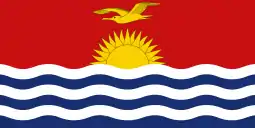 Kiribati
Kiribati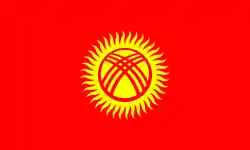 Kyrgyzstan
Kyrgyzstan Malawi
Malawi Namibia
Namibia Nepal
Nepal Nicaragua
Nicaragua Niger
Niger North Macedonia
North Macedonia Rwanda
Rwanda Philippines
Philippines Republic of China (Taiwan)
Republic of China (Taiwan) Uruguay
Uruguay Zaire (1971-1997)
Zaire (1971-1997)
Animal

Bird
 Ascension Island (UK overseas territory) — sea gulls and turtles
Ascension Island (UK overseas territory) — sea gulls and turtles.svg.png.webp) Bolivia — condor and llama
Bolivia — condor and llama Christmas Island (external territory of Australia) — bird (golden bosun bird)
Christmas Island (external territory of Australia) — bird (golden bosun bird) Dominica — sisserou parrot
Dominica — sisserou parrot Ecuador — condor
Ecuador — condor Fiji — White pelican and yellow lion
Fiji — White pelican and yellow lion Guatemala — quetzal
Guatemala — quetzal Kiribati — frigatebird
Kiribati — frigatebird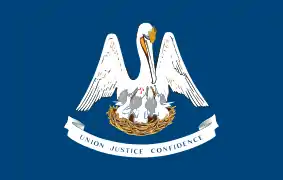 Louisiana — pelican
Louisiana — pelican Papua New Guinea — raggiana bird-of-paradise
Papua New Guinea — raggiana bird-of-paradise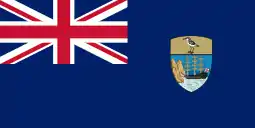 Saint Helena (UK overseas territory) — Saint Helena plover
Saint Helena (UK overseas territory) — Saint Helena plover Sint Maarten (constituent country of the Netherlands) — pelican
Sint Maarten (constituent country of the Netherlands) — pelican South Australia (Australian state) — piping shrike
South Australia (Australian state) — piping shrike Uganda — grey crowned crane
Uganda — grey crowned crane Western Australia (Australian state) — swan
Western Australia (Australian state) — swan Zambia — African fish eagle
Zambia — African fish eagle Zimbabwe — Zimbabwe Bird
Zimbabwe — Zimbabwe Bird
Eagle
 Albania — double-headed eagle
Albania — double-headed eagle Egypt — Eagle of Saladin
Egypt — Eagle of Saladin Kazakhstan — steppe eagle
Kazakhstan — steppe eagle Mexico — eagle and snake
Mexico — eagle and snake Moldova — eagle and aurochs
Moldova — eagle and aurochs Montenegro — double-headed eagle and lion
Montenegro — double-headed eagle and lion Serbia — double-headed eagle
Serbia — double-headed eagle United States Virgin Islands (US overseas territory) — eagle
United States Virgin Islands (US overseas territory) — eagle
Livestock
Lion
Coat of arms
 Afghanistan
Afghanistan Andorra
Andorra Belize
Belize.svg.png.webp) Bolivia
Bolivia Brunei
Brunei.svg.png.webp) Canada (1868–1928)
Canada (1868–1928).svg.png.webp) Canada (1921–1957)
Canada (1921–1957).svg.png.webp) Canada (1957–1965)
Canada (1957–1965).svg.png.webp) Costa Rica
Costa Rica Croatia
Croatia Dominican Republic
Dominican Republic Ecuador
Ecuador Egypt
Egypt Equatorial Guinea
Equatorial Guinea El Salvador
El Salvador Fiji
Fiji Guatemala
Guatemala Haiti
Haiti Mexico
Mexico Moldova
Moldova Montenegro
Montenegro Nicaragua
Nicaragua Paraguay
Paraguay Portugal
Portugal San Marino
San Marino Serbia
Serbia Slovakia
Slovakia Slovenia
Slovenia Spain
Spain
Phrygian cap
.svg.png.webp) Bolivia
Bolivia El Salvador
El Salvador Haiti
Haiti Nicaragua
Nicaragua Paraguay (reverse side)
Paraguay (reverse side)
Weaponry

 Angola — machete
Angola — machete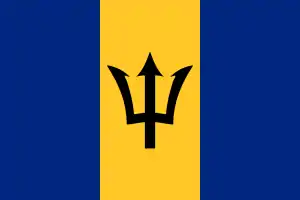 Barbados — (trident-head)
Barbados — (trident-head).svg.png.webp) Bolivia — cannon, rifles and axe
Bolivia — cannon, rifles and axe Eswatini — spears and shield
Eswatini — spears and shield Guatemala — rifles
Guatemala — rifles Haiti - cannon
Haiti - cannon Kenya — spears and Maasai shield
Kenya — spears and Maasai shield Mozambique — AK-47 with a bayonet
Mozambique — AK-47 with a bayonet Oman — swords and Khanjar
Oman — swords and Khanjar Saudi Arabia — sword
Saudi Arabia — sword Sri Lanka — sword
Sri Lanka — sword.svg.png.webp) Venezuela — sword, sabre and three lances
Venezuela — sword, sabre and three lances
Ships
 Belize
Belize.svg.png.webp) Costa Rica
Costa Rica Ecuador
Ecuador French Polynesia (overseas collectivity of France)
French Polynesia (overseas collectivity of France)
Agricultural and industrial tools

 Angola — half-gear and machete
Angola — half-gear and machete Belize — axes, saw
Belize — axes, saw Mozambique — hoe
Mozambique — hoe.svg.png.webp) Myanmar (1974–2010) — gear
Myanmar (1974–2010) — gear Soviet Union (1917–1991) — hammer and sickle
Soviet Union (1917–1991) — hammer and sickle
.svg.png.webp) Transnistria — hammer and sickle (non-communist)
Transnistria — hammer and sickle (non-communist)
Plants

.svg.png.webp) Bolivia — palm, laurel and olive branches
Bolivia — palm, laurel and olive branches.svg.png.webp) Canada — maple leaf
Canada — maple leaf Cyprus — olive branches
Cyprus — olive branches Grenada — clove of nutmeg
Grenada — clove of nutmeg Eritrea — olive branch
Eritrea — olive branch Equatorial Guinea — silk-cotton tree
Equatorial Guinea — silk-cotton tree Fiji — sugarcane, coconut palm, banana
Fiji — sugarcane, coconut palm, banana Hong Kong (special administrative region in China) — Hong Kong orchid
Hong Kong (special administrative region in China) — Hong Kong orchid Lebanon — Lebanon cedar
Lebanon — Lebanon cedar Macao (special administrative region in China) — lotus flower
Macao (special administrative region in China) — lotus flower Mexico — cactus
Mexico — cactus.svg.png.webp) Myanmar (1974–2010) — rice plant
Myanmar (1974–2010) — rice plant Vanuatu — leaves of namele tree
Vanuatu — leaves of namele tree
Fleur-de-lis
.svg.png.webp) Guadeloupe (overseas department of France)
Guadeloupe (overseas department of France) Quebec (province of Canada)
Quebec (province of Canada).svg.png.webp) Saint-Barthélemy (overseas collectivity of France)
Saint-Barthélemy (overseas collectivity of France) Serbia
Serbia Spain
Spain
Map

.svg.png.webp) Bangladesh (1971)
Bangladesh (1971)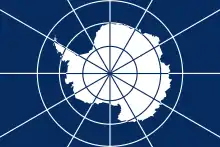 Antarctica
Antarctica African Union
African Union Christmas Island (external territory of Australia)
Christmas Island (external territory of Australia) Cyprus
Cyprus Kosovo (partly recognized)
Kosovo (partly recognized) Tuvalu: the flag of Tuvalu on the fly has 9 yellow five-pointed stars that are representing the islands and atolls of the country
Tuvalu: the flag of Tuvalu on the fly has 9 yellow five-pointed stars that are representing the islands and atolls of the country
Hills and mountains
.svg.png.webp) Bolivia — Cerro Rico and Cerro Menor
Bolivia — Cerro Rico and Cerro Menor.svg.png.webp) Costa Rica
Costa Rica Ecuador — Chimborazo
Ecuador — Chimborazo El Salvador
El Salvador Nicaragua
Nicaragua Saint Lucia — Pitons
Saint Lucia — Pitons San Marino
San Marino Sint Eustatius (Netherlands Caribbean) — The Quill
Sint Eustatius (Netherlands Caribbean) — The Quill Slovakia — Tatra, Mátra and Fatra
Slovakia — Tatra, Mátra and Fatra Slovenia — Triglav
Slovenia — Triglav
Building
 Afghanistan — mosque
Afghanistan — mosque.svg.png.webp) Bolivia — church (Chapel of the Sacred Heart of Jesus)
Bolivia — church (Chapel of the Sacred Heart of Jesus) Cambodia — Angkor Wat
Cambodia — Angkor Wat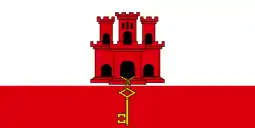 Gibraltar (UK overseas territory) — castle
Gibraltar (UK overseas territory) — castle Portugal — seven castles
Portugal — seven castles San Marino — three castles
San Marino — three castles Sint Maarten (constituent country of the Netherlands) — courthouse
Sint Maarten (constituent country of the Netherlands) — courthouse Spain — castle
Spain — castle
Other symbols

 Danzig (1920-1939) (King's Crown)
Danzig (1920-1939) (King's Crown) Dominican Republic (Bible)
Dominican Republic (Bible) India (Ashoka Chakra)
India (Ashoka Chakra) Iran (Emblem of Iran)
Iran (Emblem of Iran) Isle of Man (UK crown dependency) (triskelion)
Isle of Man (UK crown dependency) (triskelion) Mongolia (Soyombo)
Mongolia (Soyombo) Kyrgyzstan (sun with a crown of the traditional Kyrgyz yurt)
Kyrgyzstan (sun with a crown of the traditional Kyrgyz yurt) Mozambique — book
Mozambique — book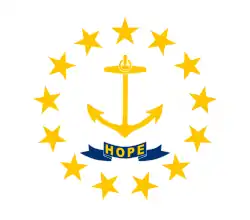 Rhode Island — anchor
Rhode Island — anchor Saint Vincent and the Grenadines (diamonds in a V pattern)
Saint Vincent and the Grenadines (diamonds in a V pattern).svg.png.webp) Sicily (autonomous region in Italy ) (trinacria)
Sicily (autonomous region in Italy ) (trinacria) South Korea (Taegeuk and four black trigrams)
South Korea (Taegeuk and four black trigrams) Zaire (Hand holding Leading Torch, 1971-1997)
Zaire (Hand holding Leading Torch, 1971-1997)
Text
Country name

Country name and motto

 Afghanistan – the lowest line of text reads Afghanistan in the Pashto alphabet, and the calligraphic text at the top is the Shahada with the Takbir written beneath it.
Afghanistan – the lowest line of text reads Afghanistan in the Pashto alphabet, and the calligraphic text at the top is the Shahada with the Takbir written beneath it. Brunei – the line of text on the crescent reads "Always render service with God's guidance", while the lower line reads Brunei Darussalam, both in the Jawi script.
Brunei – the line of text on the crescent reads "Always render service with God's guidance", while the lower line reads Brunei Darussalam, both in the Jawi script. El Salvador – the name of the country encircles the coat of arms, which features the motto "Dios, Unión, Libertad" (Spanish for "God, Unity, Freedom") inside.
El Salvador – the name of the country encircles the coat of arms, which features the motto "Dios, Unión, Libertad" (Spanish for "God, Unity, Freedom") inside. Dominican Republic – the motto "Dios, Patria, Libertad" (meaning "God, Homeland, Freedom" in Spanish) can be read above the coat of arms at the center, below is the name of the country.
Dominican Republic – the motto "Dios, Patria, Libertad" (meaning "God, Homeland, Freedom" in Spanish) can be read above the coat of arms at the center, below is the name of the country.
Motto

 Andorra – "VIRTVS VNITA FORTIOR", Classical Latin for "United virtue is stronger".
Andorra – "VIRTVS VNITA FORTIOR", Classical Latin for "United virtue is stronger". Belize – "Sub Umbra Floreo", meaning "Under the Shade I Flourish" in Latin.
Belize – "Sub Umbra Floreo", meaning "Under the Shade I Flourish" in Latin. Brazil – "Ordem e Progresso", meaning "Order and Progress" in Portuguese.
Brazil – "Ordem e Progresso", meaning "Order and Progress" in Portuguese. Equatorial Guinea – "Unidad, Paz, Justicia", meaning "Unity, Peace, Justice" in Spanish
Equatorial Guinea – "Unidad, Paz, Justicia", meaning "Unity, Peace, Justice" in Spanish Iran – the Takbir ("Allahu akbar", which means "God is [the] greatest") written in the Kufic script 11 times.
Iran – the Takbir ("Allahu akbar", which means "God is [the] greatest") written in the Kufic script 11 times. Iraq – the Takbir written in the Kufic script.
Iraq – the Takbir written in the Kufic script. San Marino – "LIBERTAS", Latin for "Freedom".
San Marino – "LIBERTAS", Latin for "Freedom". Saudi Arabia – the Shahada (an Islamic creed meaning "There is no God but Allah and Muhammad is his Prophet") written in the Thuluth script.
Saudi Arabia – the Shahada (an Islamic creed meaning "There is no God but Allah and Muhammad is his Prophet") written in the Thuluth script. Somaliland – the Shahada
Somaliland – the Shahada Spain – "PLVS VLTRA", Latin for "Further beyond".
Spain – "PLVS VLTRA", Latin for "Further beyond".
Other texts

 California - the name of the short lived and unrecognized state "California Republic", which preceded California's admission into the Union.
California - the name of the short lived and unrecognized state "California Republic", which preceded California's admission into the Union. Dominican Republic - the Bible is opened to the Gospel of John, chapter 8, verse 32, which reads “Y la verdad los hará libres”, which translates to “And the truth shall set you free” from Spanish.
Dominican Republic - the Bible is opened to the Gospel of John, chapter 8, verse 32, which reads “Y la verdad los hará libres”, which translates to “And the truth shall set you free” from Spanish. Guatemala – "Libertad 15 de septiembre de 1821", a combination of the Spanish word for "Freedom" and the date of independence of the former Federal Republic of Central America from Spain.
Guatemala – "Libertad 15 de septiembre de 1821", a combination of the Spanish word for "Freedom" and the date of independence of the former Federal Republic of Central America from Spain. Haiti – "L'union fait la force" (meaning "Union makes strength" in French), which is different from the country's official motto "Liberté, égalité, fraternité".
Haiti – "L'union fait la force" (meaning "Union makes strength" in French), which is different from the country's official motto "Liberté, égalité, fraternité". Malta – "For Gallantry" can be read at the George Cross carried in the canton.
Malta – "For Gallantry" can be read at the George Cross carried in the canton.
Flags of another state
.svg.png.webp) Australia
Australia.svg.png.webp) Canada (1868–1921)
Canada (1868–1921).svg.png.webp) Canada (1921–1957)
Canada (1921–1957).svg.png.webp) Canada (1957–1965)
Canada (1957–1965) Fiji
Fiji New Zealand
New Zealand.svg.png.webp) South Africa (1928–1994)
South Africa (1928–1994) Tuvalu
Tuvalu.svg.png.webp) United States (1776–1777)
United States (1776–1777)
Related articles
Similarities in flags
Gallery of sovereign state flags
Vexillology
